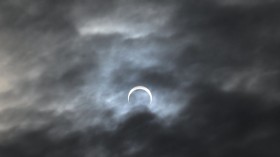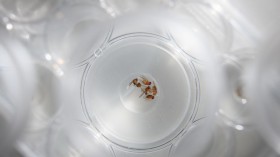After the $2.5 billion Curiosity mission that will detect the presence of microbial life on Mars and information on the planet's geology and atmosphere, NASA is now all set for its new mission that will be launched in 2016. It has been designed to delve into the interior of Mars, focusing on why the red planet evolved so differently from the Earth.
The new mission, InSight, will investigate the core of the planet. It will find out whether the core of Mars is solid or liquid, like Earth. This will be done with the help of instruments placed on the Martian surface. It also seeks to reveal why the crust of Mars is not divided into tectonic plates that drift like Earth's.
"The exploration of Mars is a top priority for NASA, and the selection of 'InSight' ensures we will continue to unlock the mysteries of the Red Planet and lay the groundwork for a future human mission there," said NASA administrator Charles Bolden. "The recent successful landing of the Curiosity rover has galvanized public interest in space exploration and today's announcement makes clear there are more exciting Mars missions to come," he said, referring to the success of Curiosity.
The team for the new mission includes U.S. and international co-investigators from universities, industry and government agencies. It will be led by W. Bruce Banerdt at NASA's Jet Propulsion Laboratory (JPL).
InSight, which is the 12th selection in the NASA series of Discovery class missions, is scheduled to land in September 2016 to carry out a two-year scientific exploration.
InSight will basically carry with it four instruments, in which JPL will provide an onboard geodetic instrument to determine the planet's rotation axis, and a robotic arm and two cameras used to deploy and monitor instruments on the Martian surface.
Insight is built on spacecraft technologies that were used in NASA's highly successful Phoenix Lander mission, which was launched on Mars in 2007. It had detected the presence of water in the polar regions. The cost of the new mission, excluding the launch vehicle and related services, wrapped up to a hefty $425 million.
"Our Discovery Program enables scientists to use innovative approaches to answering fundamental questions about our solar system in the lowest cost mission category," said John Grunsfeld, associate administrator for the Science Mission Directorate at NASA Headquarters. "'InSight' will get to the 'core' of the nature of the interior and structure of Mars, well below the observations we've been able to make from orbit or the surface."
© 2024 NatureWorldNews.com All rights reserved. Do not reproduce without permission.





